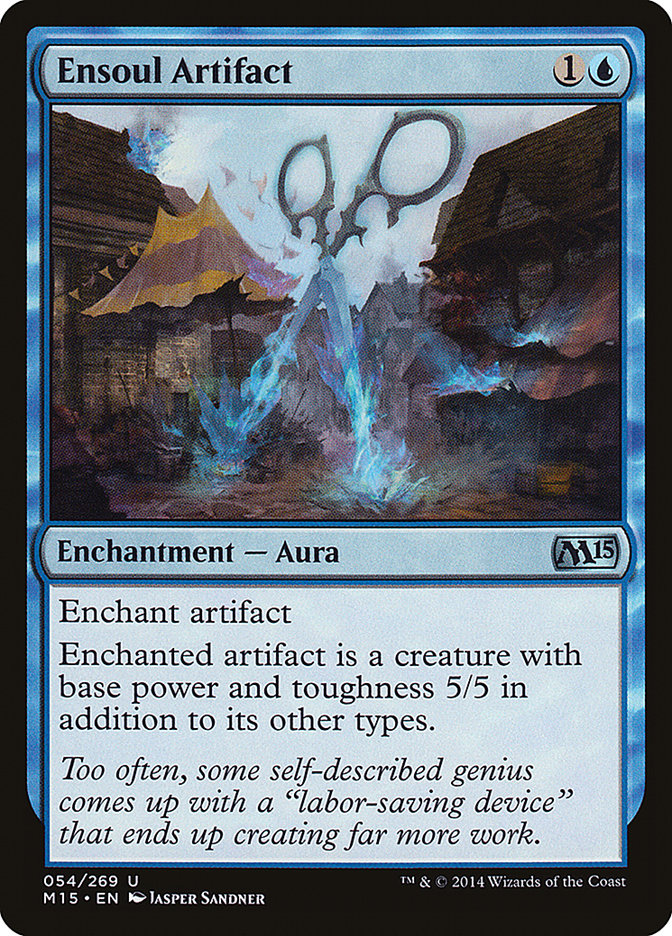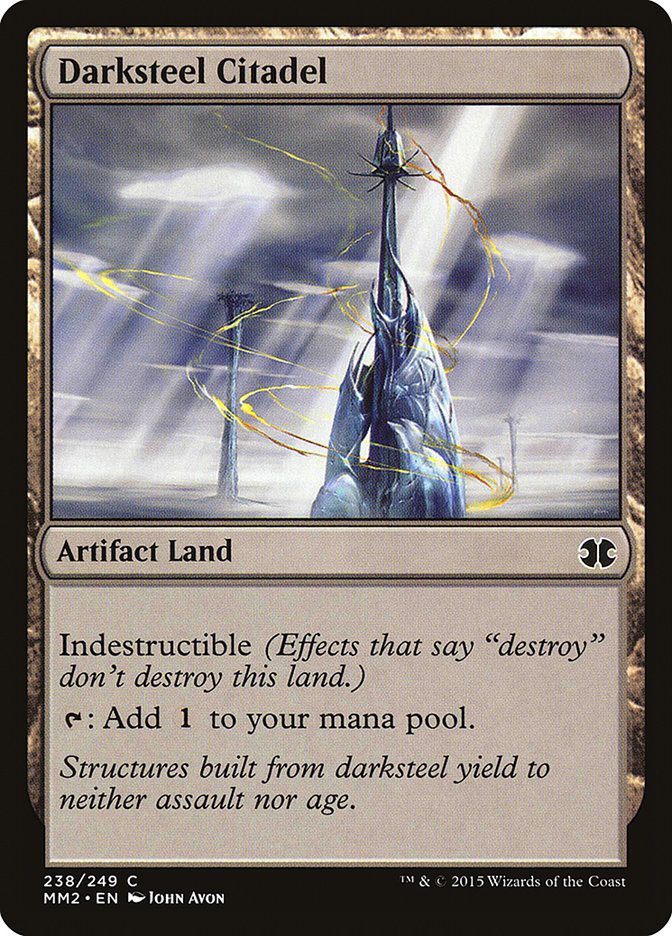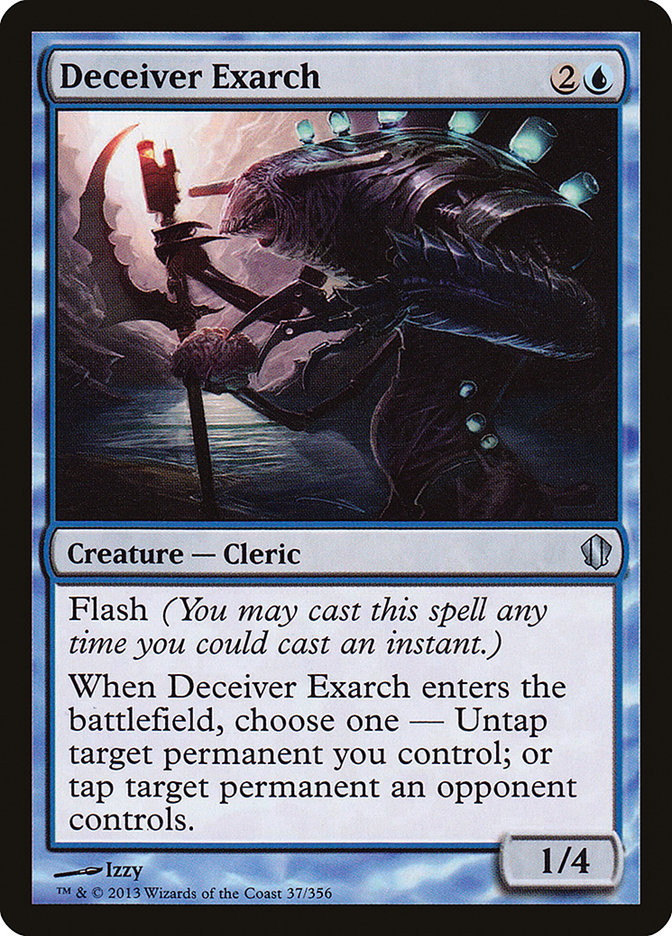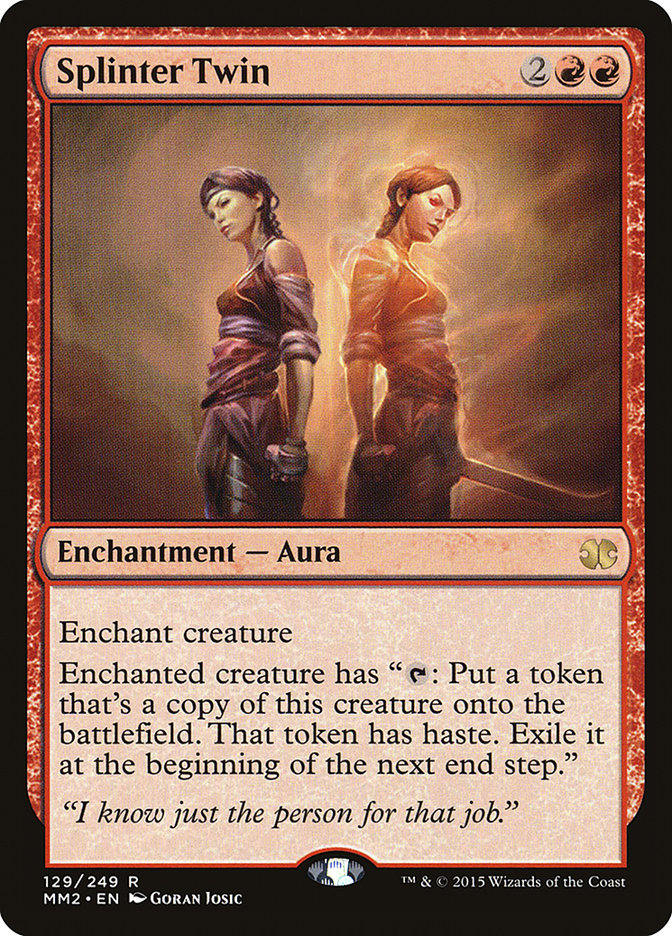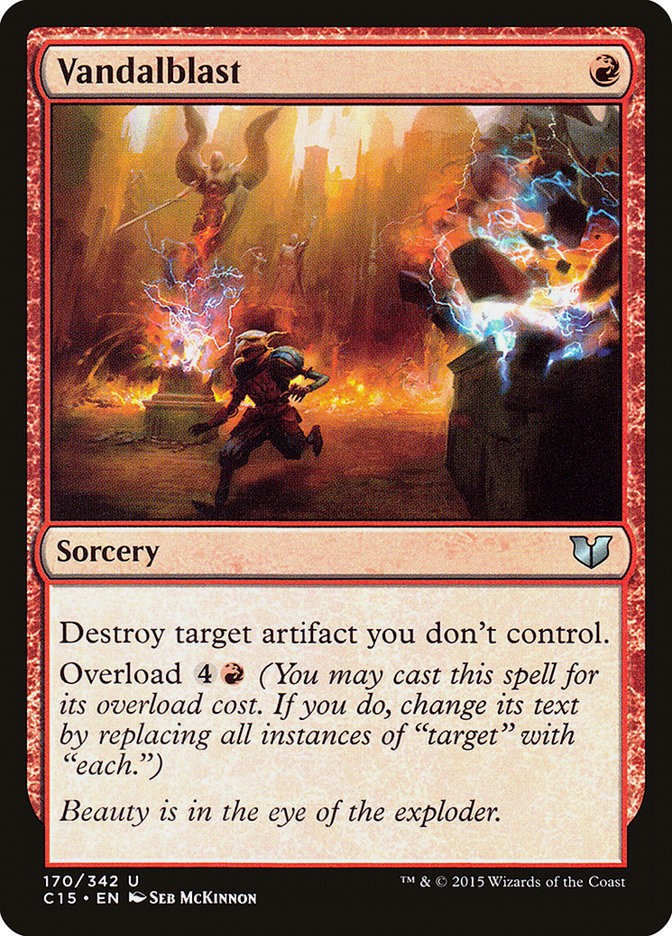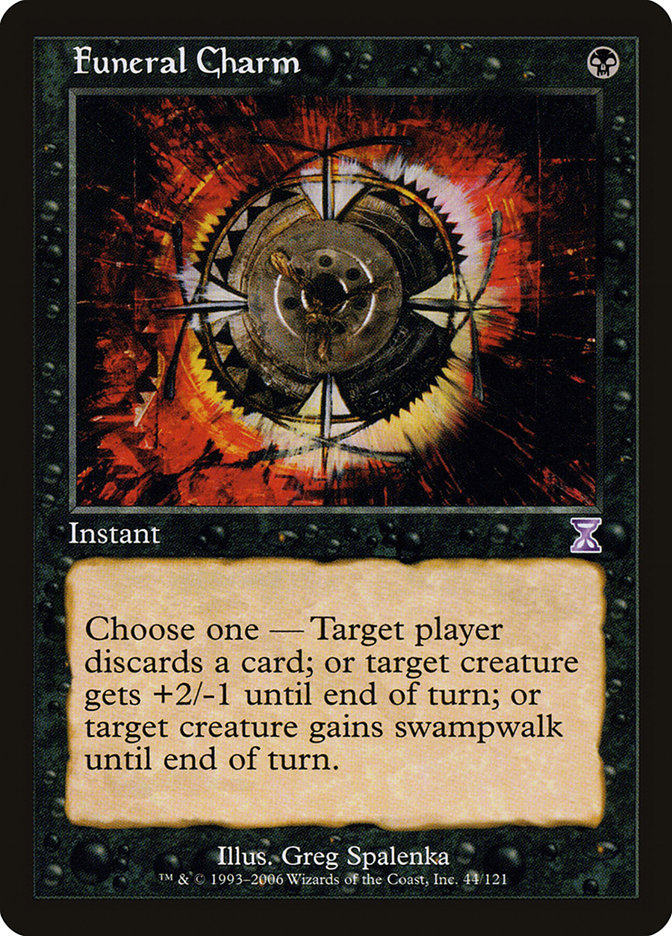Robust sideboarding is an important part of any format. However, it is especially important in formats where there exists a powerful, popular deck that can overwhelm singular countermeasures. If we pretend that we are the hero of our story – or, better yet, the superhero of the story – there are some decks that won’t simply fold to a single hit. Spiderman can’t expect to take out Dr. Doom with a single punch. Dr. Doom is not just some bank robber. It is going to take a lot more than that.
The most obvious example of this is in Modern, where a deck like Affinity exists. What you so often see from many players is a naive assumption that in order to fight a deck like Affinity, you just need to have a few backbreaking cards. For example, it isn’t uncommon to see a sideboard have a plan that looks like this:
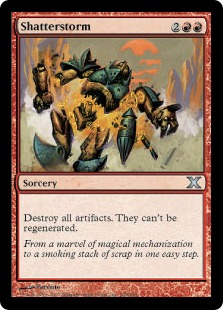

Or this:
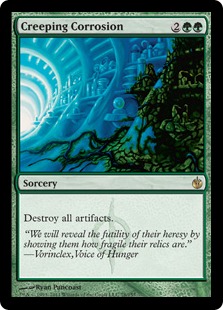


Coming out of a deck like Abzan or say G/W HateBears, even if there are also already cards like Path to Exile, this is woefully inadequate. In these kinds of matchups, after sideboard, you really need to be having an entire gameplan, because Affinity, as hurt as it is to lose all of the artifacts, it can be ready for a four-mana sorcery.
Take this recent deck from Las Vegas this last weekend, from the Modern Classic:
Creatures (25)
- 4 Arcbound Ravager
- 4 Ornithopter
- 2 Master of Etherium
- 3 Steel Overseer
- 2 Memnite
- 2 Etched Champion
- 4 Signal Pest
- 4 Vault Skirge
Lands (16)
Spells (19)

Aside from simply killing you before you can get to four mana, there are other things that can happen. Savvy Affinity players, seeing the potential for a sorcery speed sweep, can take a moment to turn a Blinkmoth Nexus or Inkmoth Nexus into a monster by giving it Arcbound Ravager counters the turn before a suspected sweep spell. Galvanic Blast (or in other decks, Shrapnel Blast) can drop a life total low, and the second sweep up can take things out. Stubborn Denial and Thoughtseize can deal with the slow answer. Heck, in Reginald’s list, it can be a pair of scissors:
It’s a potent set of countermeasures that, all told, make facing Affinity your equivalent of facing the supervillain. You might well have a great matchup against the deck, but you don’t do it by merely having a strong counterpunch. You do it by having a full-fledged plan that can react to all stages of the game.
Take a deck like Andrew Tenjum’s list, which won in the finals versus this very matchup:
Creatures (12)
Lands (23)
Spells (25)

It isn’t just that Andrew Tenjum has a nice early removal package after sideboard:




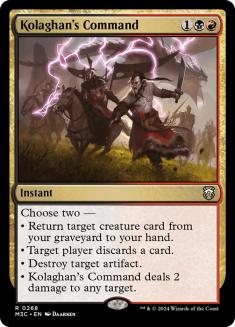

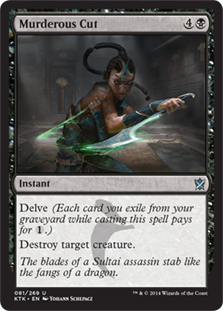
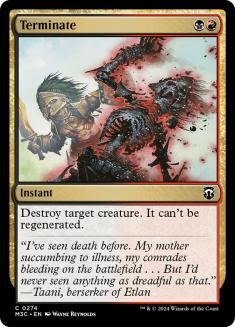

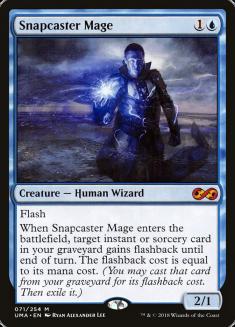



He also has some excellent access to sweep cards:

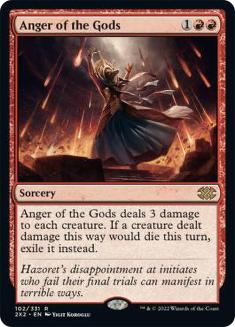

But, in addition, it is wildly important that he can threaten a kill with combo:
In the midst of suppressing his opponent with true removal and annoying them with Twiddle effects, if his opponent isn’t also being mindful, his opponent can simply die to infinite Faeries or Clerics.
What about a deck that doesn’t have that explosive other end, though?
Well, I have a deck that I don’t think is very good, but it is quite good against Affinity, and I’ve even beaten Affinity on camera with it:
Creatures (10)
Planeswalkers (2)
Lands (21)
Spells (27)

Now, this is not a deck that I think is a great deck by any means. It has some real problems. But, it also has the means to simply overwhelm something like an Affinity deck, all while having a robust plan.
What does it mean to have a robust plan? Well, at its simplest, you aren’t simply relying on some single card to bail you out. Even if you are running those huge knock out cards as well – cards like Blood Moon, Shatterstorm, Rest in Peace, or whatever the hate card – you are also including cards that can suppress an opponent at other simple levels of the game as well.
Not every deck needs to be answered robustly, but a deck like Affinity does.
Commonly, any Grixis deck has the capability to do this, based largely on simply these two cards:
Once you have access to these two cards that you’d usually expect to see in Grixis, like Lightning Bolt and Terminate, what you have is a nearly untenable situation for a deck like Affinity. There is sufficient early removal to not be under the gun from moment one, but you’re also running cards that start pulling you into card advantage. Not only does this mean that you’re dragging out the game, but as you drag it out, you also start pulling into even more powerful cards that further dismantle the game.
In essence, you set up a situation where their only hope is to either end the game incredibly quickly or have them manage to go over the top with something extremely potent, and you make such a situation fairly unlikely.
Against a typical Affinity deck then, their best hope is likely to be some hard-to-deal with card. Typically this will be Etched Champion, though Reginald’s deck, above, also has Ensoul Artifact on a Darksteel Citadel to reckon with.
In turn, that is facing off against some combination of this:








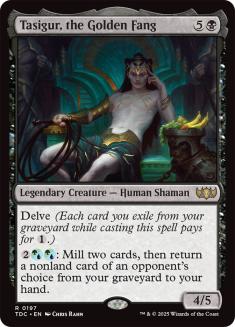

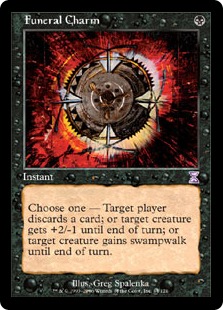









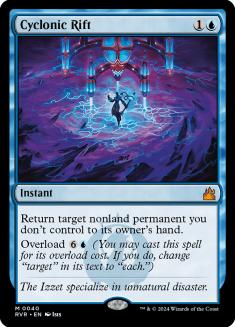
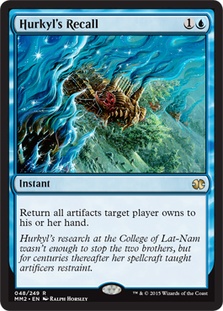
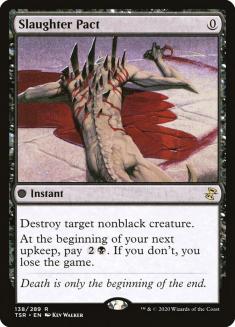
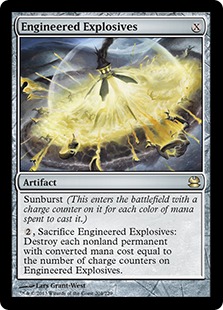





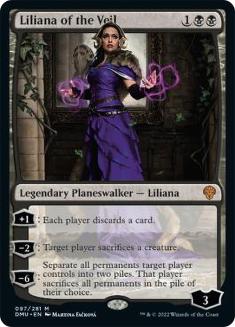


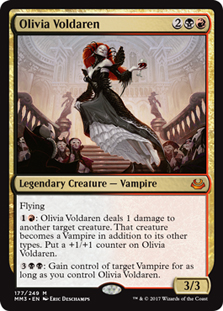
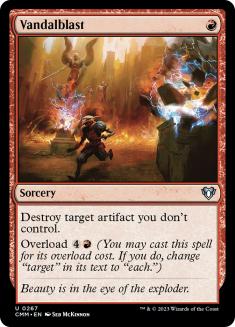
With all of that, you still have room for five other spells that aren’t on plan.
Not every deck can have this luxury in every matchup like this, but not every deck needs it, either. Andrew Tenjum’s deck, for example, is totally capable of winning in a matchup versus Affinity because it has enough cards that are similar to what this deck is doing, and it can just go over the top with an infinite combo.
How much is being sideboarded in, here, for my deck:









But really, how much is specifically for the Affinity matchup?
The rest are just powerful cards that happen to be useful in a lot of places. Kolaghan’s Command is great in any grinding matchup, and I’d probably end up bringing it in in a dozen other common matchups. Slaughter Pact is a great way to fight decks like Twin or many others. Engineered Explosives has applications versus things as varied as G/W Hate Bears, Grixis Twin or Temur Twin, Pyromancer Ascension, and more. The same things can be said for all of the other sideboarding choices.
Even truly weak cards can be a part of this robust plan. For example, take Funeral Charm:
This isn’t an intensely powerful card. But whether it is early or late, it can be a part of suppressing Affinity. Early on, it can kill Memnite, Signal Pest, Vault Skirge, and Steel Overseer, as well as several other possible card choices. Later in the game, it can be a one-mana way to kill a Nexus that might otherwise threaten to be lethal or sneakily stymie a Ravager’s modular counters.
If we shift gears to Standard, Rally decks are another Supervillain-style deck that simply can’t be responded to by simply having a few cards and expecting them to perform a knockout.
A part of why Affinity in Modern and Rally in Standard are so similar is that both are incredibly powerful in their straightforward take on the game, but they are also both very resilient against attempts to stop them. That combination of power and flexibility create the need in their opponents to not simply try to stop them with a one-note answer.
Against some opponents, simply casting Rest in Peace or Infinite Obliteration is sufficient, with a minimum of other successful elements of your deck at play, to win a matchup. But, for the most part, if your plan versus a deck like Rally is just to cast Hallowed Moonlight, you might have another thing coming.
Let’s check out my deck from the Standard Open:
Creatures (11)
Planeswalkers (1)
Lands (26)
Spells (22)

I’ve had a very good record against Four-Color Rally with this deck because of the idea of attacking the deck robustly. Now, unfortunately, there isn’t a wild degree of overlap in what the cards are doing, so this isn’t the same as Grixis in Modern, where you can have nearly every card performing similar roles. Instead, you’re stitching together a lot of different things.
The Rally deck plays out in several different ways. First of all, it is a Collected Company deck with a lot of creatures. It is entirely possible that the deck will just swarm you with creatures and kill you. Secondly, it is a deck that stitches together card advantage engines with Grim Haruspex and potentially Jace, Vryn’s Prodigy and Liliana, Heretical Healer. Thirdly, it handily searches through its library, again with Grim Haruspex, but also with Catacomb Sifter, and, again, potentially Jace, Vryn’s Prodigy. Finally, it ends the game with Nantuko Husk, either by attacking, or by using Zulaport Cutthroat to siphon off the last of a player’s life, usually with Rally the Ancestors providing all of the fuel.
So, you have to beat the swarm. You have to beat individual creatures. And, you have to fight the value of Rally.
This multitude of things to fight are partly why when I’ve played against Rally, many opponents have looked surprised when I cast Radiant Flames. As a sideboard card, Radiant Flames has just not been very effective against them. Why? Because oftentimes an opponent casts a Radiant Flames, and not much happens. This is typically because, in essence, their opponent wasn’t doing more than that to interact, or they weren’t doing much more than that.
On the other hand, when you’re using copious creature removal, the Radiant Flames means that you are more likely to not have a Jace, Vryn’s Prodigy flipped before you cast the Flames, you’re more likely to have the battlefield truly clear, and you’re less likely to be forced to Flames into a Zulaport Cutthroat (or if you do that, you can handle it) or Grim Haruspex.
If you’re combining Radiant Flames with good countermagic like Dispel, Negate, and the pseudo-counter of Hallowed Moonlight, your use of Radiant Flames is a part of a gameplan which can begin to shut down all of the options an opponent might have. The use of cards like Transgress the Mind and Infinite Obliteration can combine to take out a Nantuko Husk entirely from the equation.
Now, this doesn’t mean you’re simply going to win the matchup. During the Standard Open in Vegas, I lost to the deck. It was, however, the first time I’d lost the match in a tournament. I’ll probably lose the matchup again at some point, but what I’d done to make the matchup feel positive is put in the energy to be able to address Four-Color Rally at any stage of the game.
This is where the sideboarding for both Mardu Blue in Standard and my Grixis deck, above have something similar going on: they both are interested at having a gameplan at every stage of the game. Mardu Blue isn’t just trying to stop Rally the Ancestors from being cast. It is also interested in winning the ground game in the meantime, so that a planeswalker doesn’t run away with the game on turn 4, or so that the ground isn’t so messy that they never even have to cast a Rally by the time you’re ready to stop one.
When you’re dealing with those decks that are powerful, flexible, and resilient, you have three choices: be more powerful and faster, be robust and have a gameplan for every stage of the game, or be dead.
Supervillains like Affinity don’t always exist in a format. When they do, if you’re forced in a position where you need to be robust, the key to being so is determining all of the ways that they can commonly take the game, and figuring out how to position yourself so that you will be on the winning end of each of those moments. If you do that, you’ll be all the more likely to be on top in the end.


